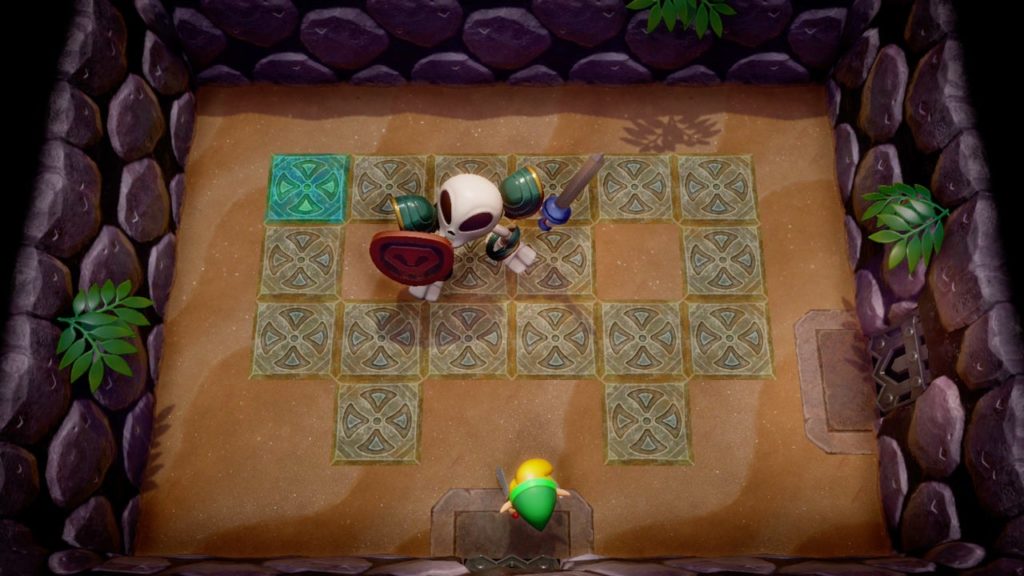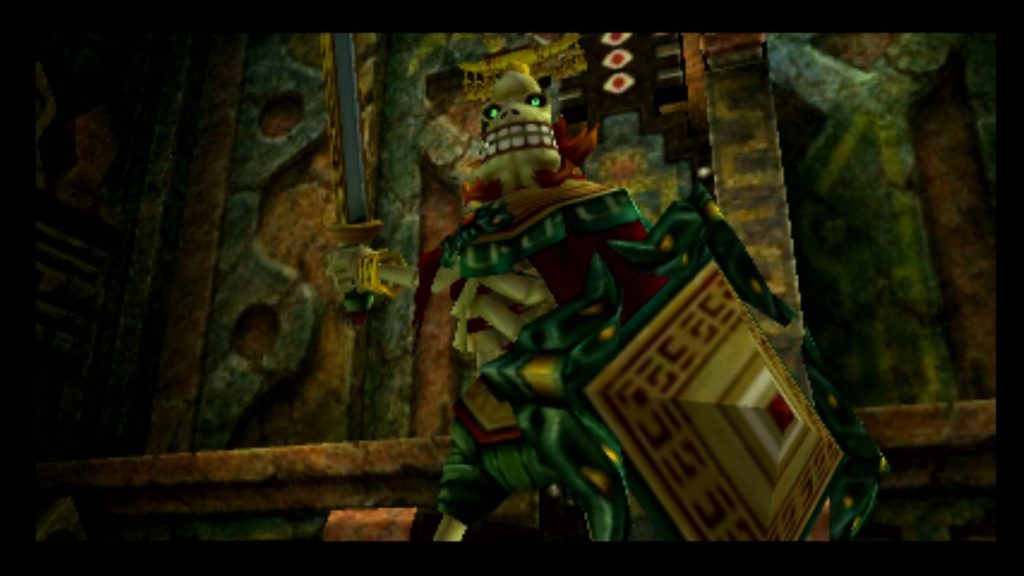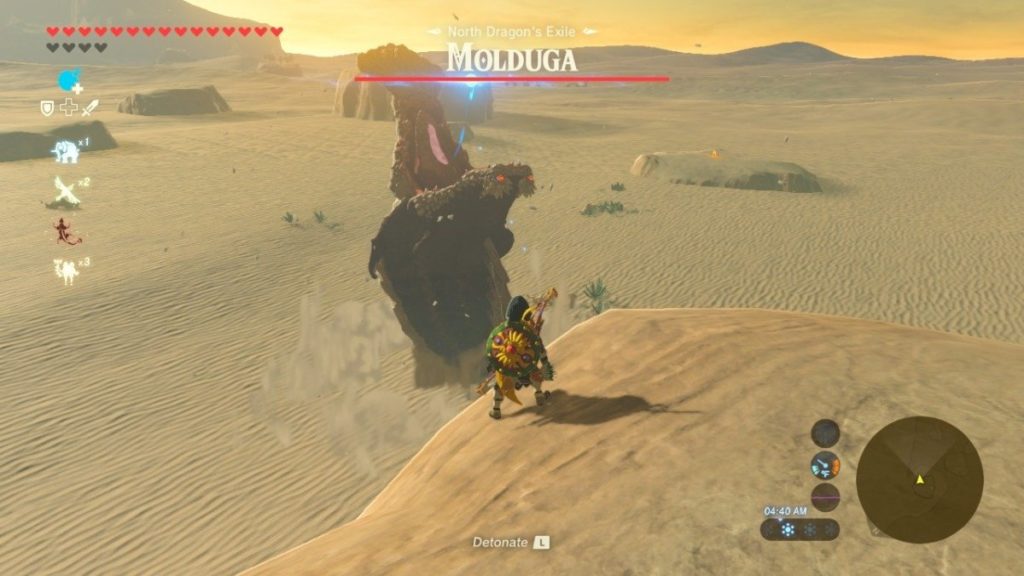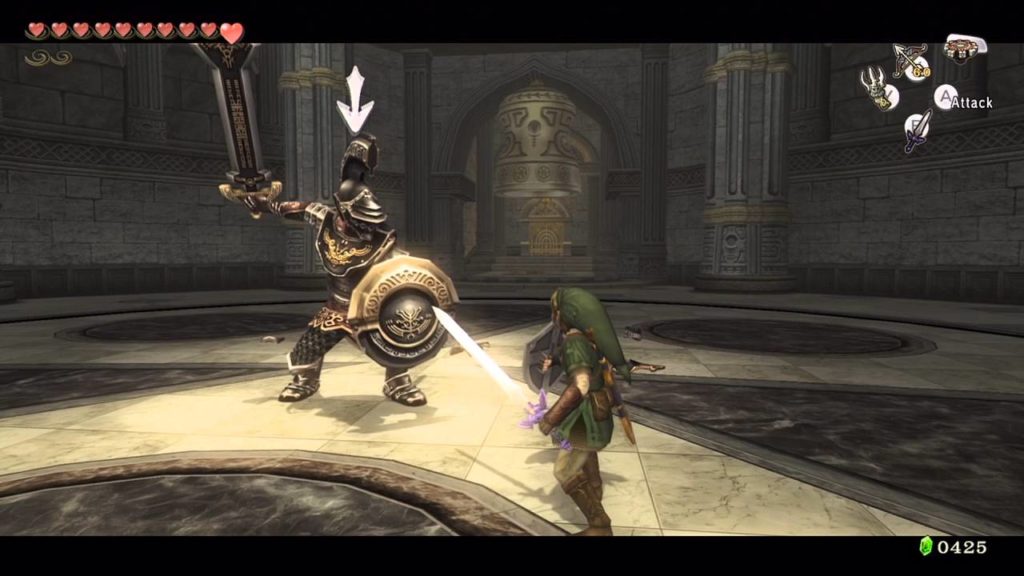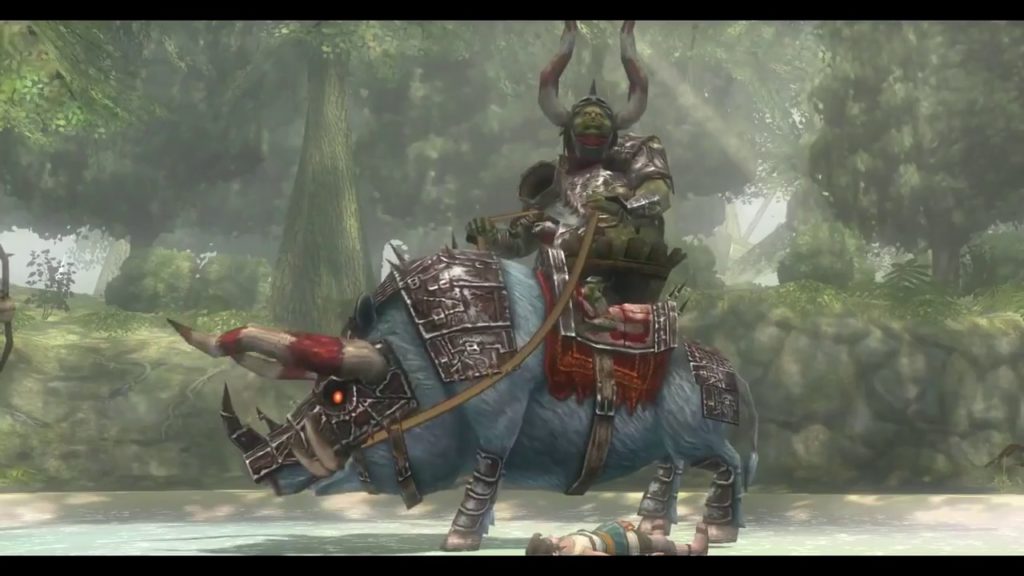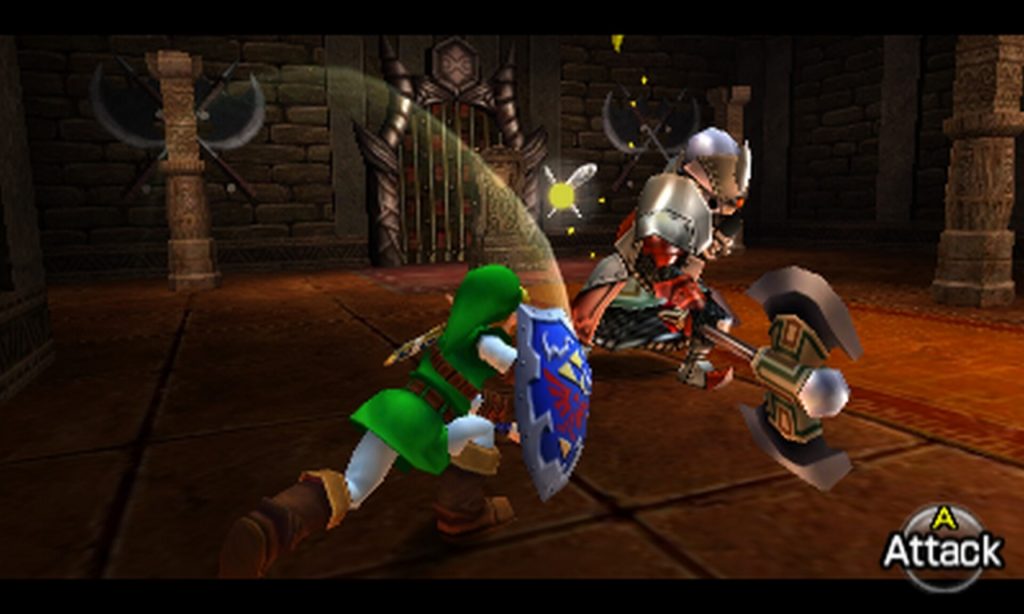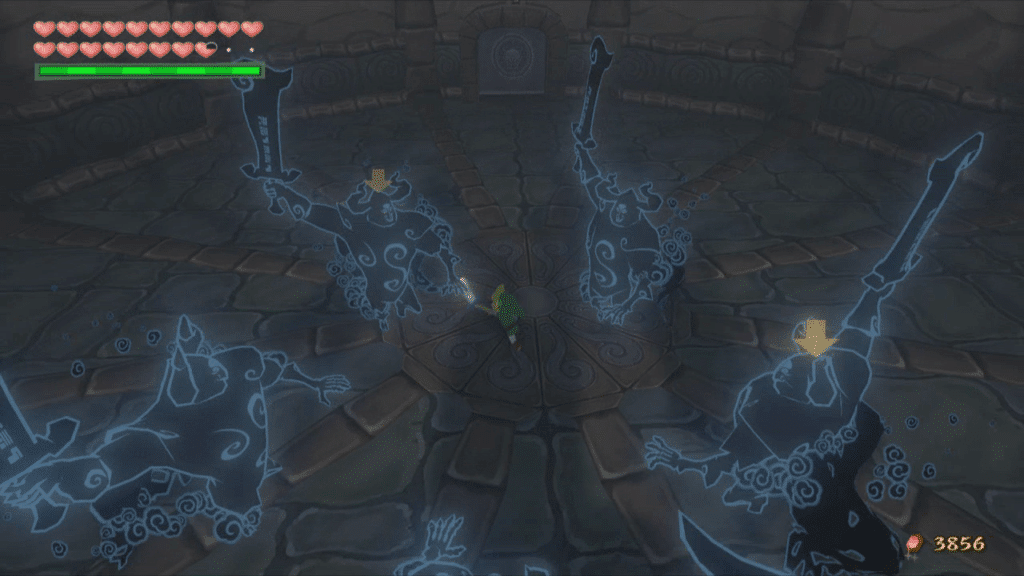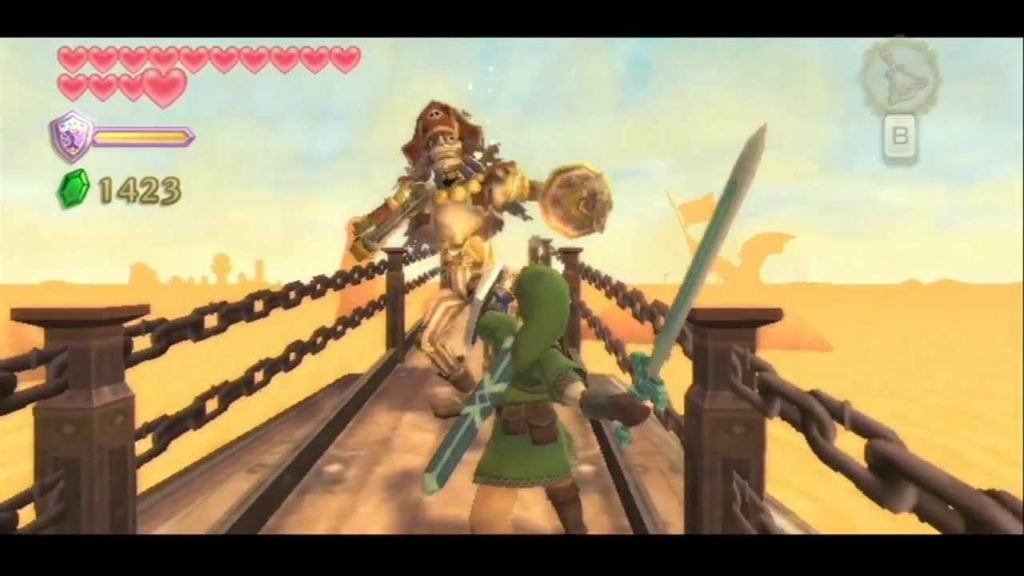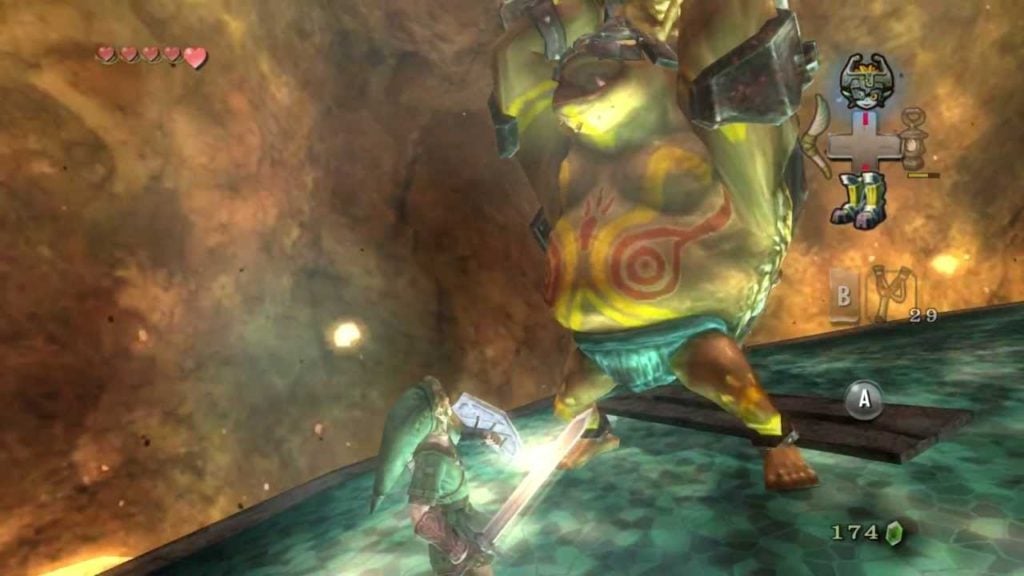-King Bulblin
The combat in the Legend of Zelda series is the heart and soul of the excitement and action. Whether you’re jumping off horseback into Bow & Arrow bullet time in Breath of the Wild or precision slicing your way through Deka Babas in Skyward Sword – nothing quite gets the blood pumping like a good old fashion monster confrontation.
In the series, although there’s usually little pockets throughout the overworlds crawling with monsters (okay, not BotW), there’s definitely no shortage of battles to be fought within each of the games’ many dungeons (ugh – go away BotW). It’s in these dungeons that the combat is at its most intense – and that’s no truer than when you’re up against the final boss. But there’s also usually a mini-boss halfway through the dungeon, ready to be a spanner in the works of Link’s heroic antics. These mini-bosses sometimes even outshine the final boss and can either supply Link with the dungeon’s weapon or force you to use all of Link’s attributes and abilities to ascertain victory.
Mini-bosses were first used regularly in Link’s Awakening – since then, they’ve become a staple of the series, and it’s been great to see the evolution of their creativity. Originating as an archaic “tougher” enemy within a dungeon, mini-bosses have changed over the years, with some even becoming integral to the game’s story. Some mini-bosses even feature in multiple entries, and it’s always fun seeing how they’re adapted for the different titles, such as the extremely contrasting Darknut design in Wind Waker and Twilight Princess. However, what’s most important is the difficulty and creative combat required in the trials and tribulations in fighting and defeating these behemoths. With that said, here’s my list of Top 10 Zelda Mini-bosses.
Did You Know?
- First used consistently in Link’s Awakening.
- The Darknut is the most recurring mini-boss at 7 times!
- Phantom Hourglass has the fewest mini-bosses.
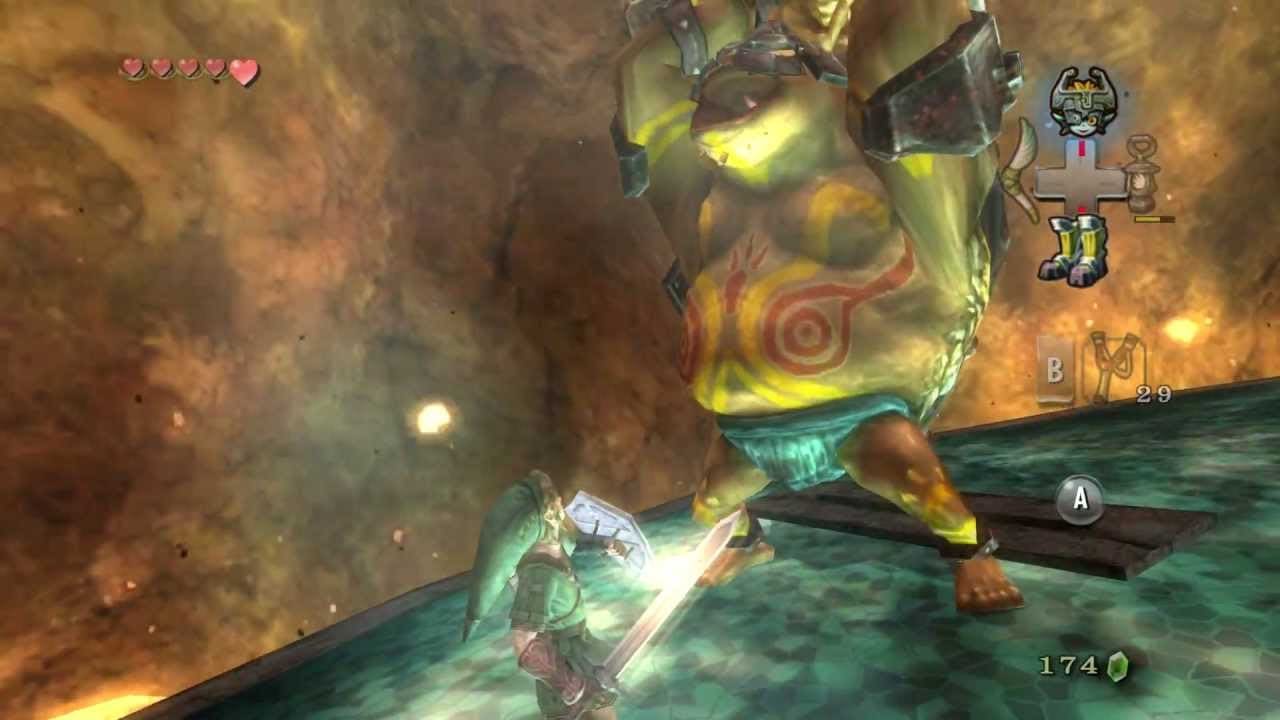
10) Dangoro
Twilight Princess has a very high calibre of both final boss fights and mini-boss fights – so it seems like a good start to kick the list off with Dangoro. Dangoro is a strange one in that, he’s just a friendly Goron doing his job. Located within the Goron Mines, Dangoro is tasked with protecting the Goron’s treasure – the Hero’s Bow. Completely unaware that Link was permitted entry to the mines by the elders, Dangoro kicks up a stink and, like a bouncer at a nightclub, just wants to take out the trash. The battle takes place on a magnetic platform that pairs nicely with the Iron Boots. When Dangoro winds up a punch, Link needs to attack his exposed belly, forcing Dangoro to roll towards Link at pace. Quickly donning the Iron boots at this point allows Link to grab the rolling Dangoro and toss him into the lava below. It’s a great battle that makes nice use of Twilight Princess’ varied items and techniques. However, it mostly stands out as an original and unique idea, by having a mini-boss turn out to be a friend and ally of Link.
9) Phantom Ganon
Phantom Ganon is a superb final boss in Ocarina of Time’s Forest Temple – but sadly gets demoted in Wind Waker. Despite the demotion, Phantom Ganon’s effort is no less impressive, giving us a frantic battle not once – not twice – but a good handful of times (thanks Illusionary Room). Link first runs into Phantom Ganon the 2nd time he visits the Forsaken Forest. On this second visit, Link is armed to the teeth with his weapons, so he has no need to sneak around in a barrel. Walking straight into the spotlight section, Phantom Ganon appears, ready to send Link to Davy Jones’ Locker. You won’t be surprised to know that the battle is made up of Dead Man’s Volley plus some swings of the Master Sword – victory resulting in the sweet Skull Hammer. He appears again in Ganon’s Tower, this time with a few more tricks up his sleeve. He eventually succumbs to a Light Arrow, leaving just his sword, which you use to progress through Wind Waker’s final dungeon. A fun fact about his sword is that it bears the inscription “Zubora Gabora”, the name of the two blacksmiths in Majora’s Mask – I always liked that fact.
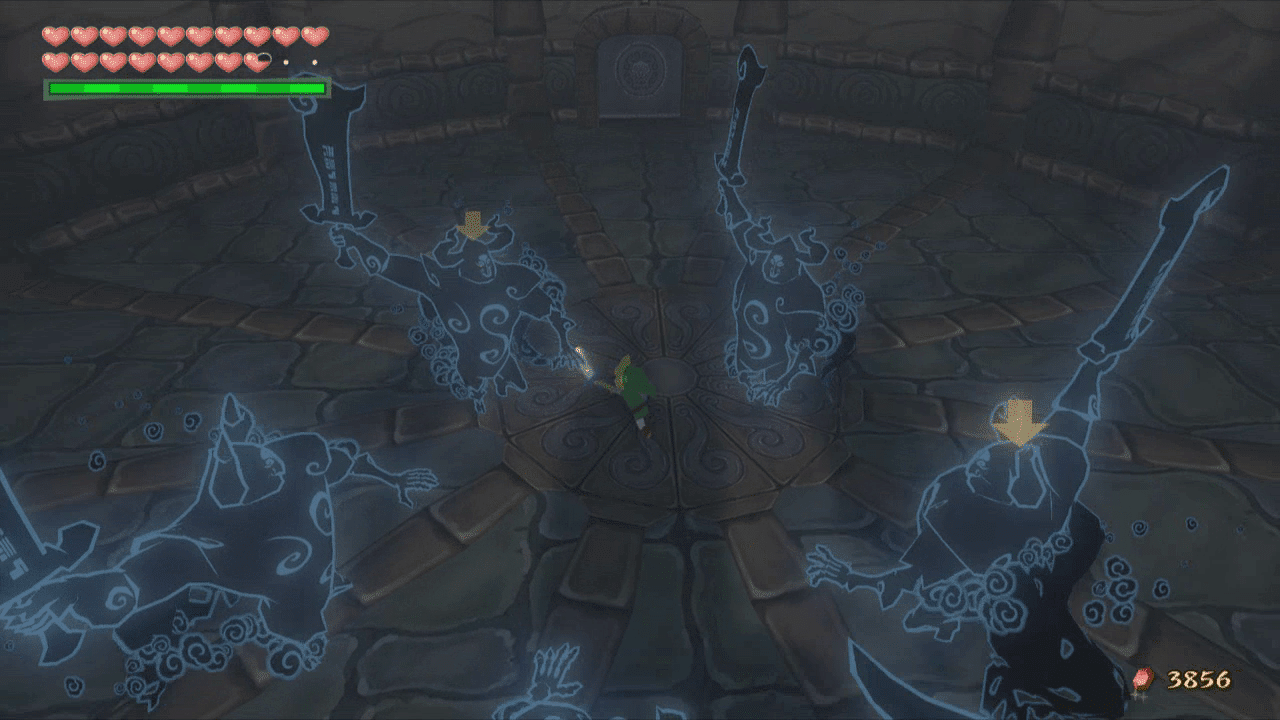
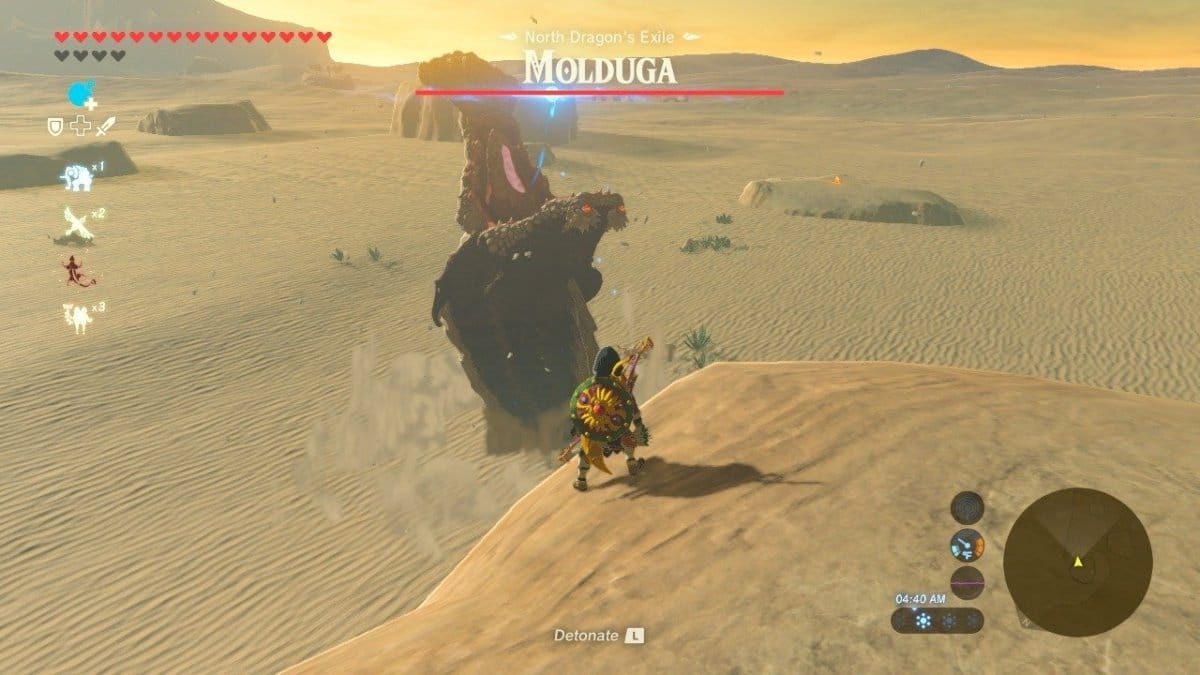
8) Molduga
Although I may have subtly bashed the lack of dungeon mini-bosses in Breath of the Wild during the intro, Breath of the Wild does feature some mini-bosses throughout Hyrule. These mini-bosses are often enormous in size, such as the overweight Hinnox or robust Stone Talus. However, none of these mini-bosses are larger than the gigantic Molduga. Molduga resides in the Gerudo Desert, and this fish-like…thing swims beneath the sand, sensing movement and vibration on the surface above. Link can use Remote Bombs to create these vibrations, forcing Molduga to leap out of the sand at an applaudable height. It’s in this leap you get to see the whole of the mighty beast, and it’s certainly rather intimidating. Detonating the bomb during this leap allows Link to then slash at Molduga until defeat. Alternatively, you can use Sand Seals and Bomb Arrows for a fast and furious battle. Whatever your means of victory, the rewards are usually a few treasure chests from the depths of Molduga’s stomach – alongside some useful monster guts ripe and ready for Kilton of the Fang and Bone.
7) Master Stalfos
Link’s Awakening was the first Zelda entry to really make thorough and consistent use of mini-bosses. Each of the eight dungeons includes a mini-boss, and whilst some are better than others, each one helps heighten the difficulty. The most bothersome, yet most charismatic, of these is Master Stalfos. Master Stalfos resides within Catfish Maw, the 5th dungeon of the game and rather than just be a mid-point mini-boss, Master Stalfos appears to fight Link FOUR TIMES. He hides throughout the dungeon in a multitude of rooms, which Link must find in order, and defeat Master Stalfos each time. The fights require Link to attack with the sword until this skeletal nuisance collapses – at this point, dropping a bomb on his boney pile will secure victory. What is great about Master Stalfos is his banter with Link – each time Link shows up, Master Stalfos is anything but modest, boasting about his superior ability. The final battle forces Master Stalfos to reluctantly give up the Hookshot and admits that Link is the mightier warrior.
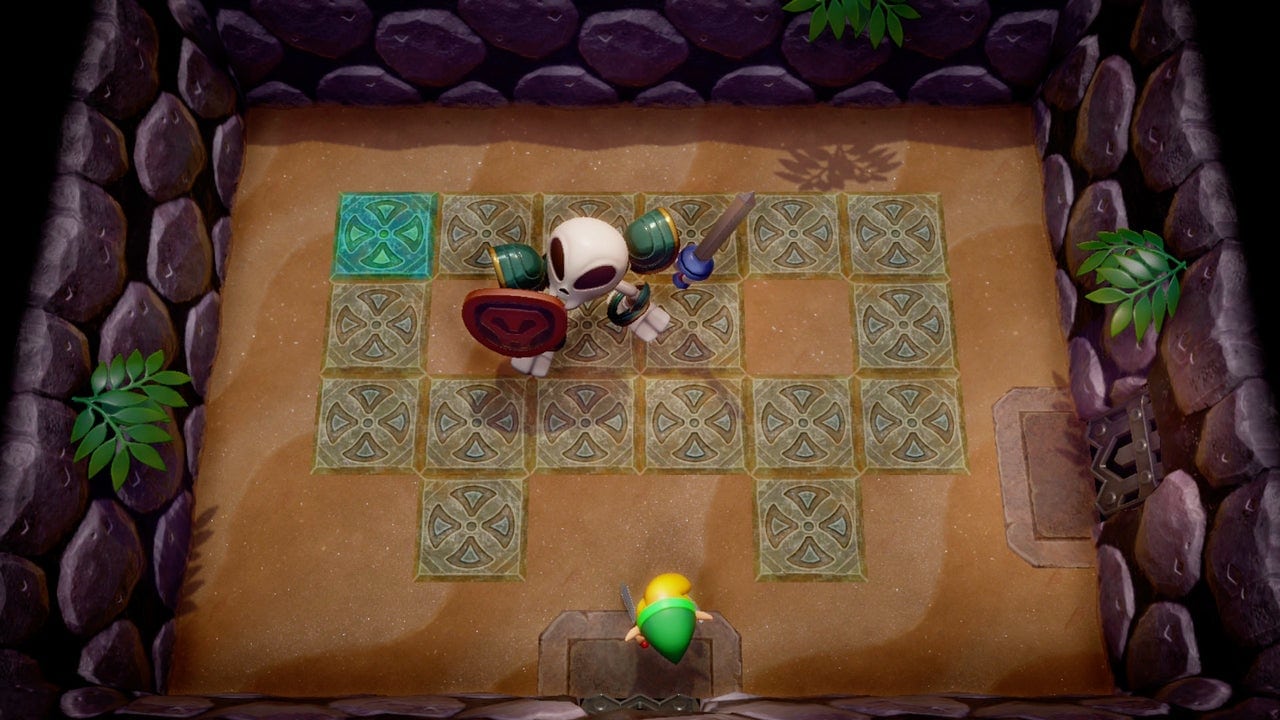
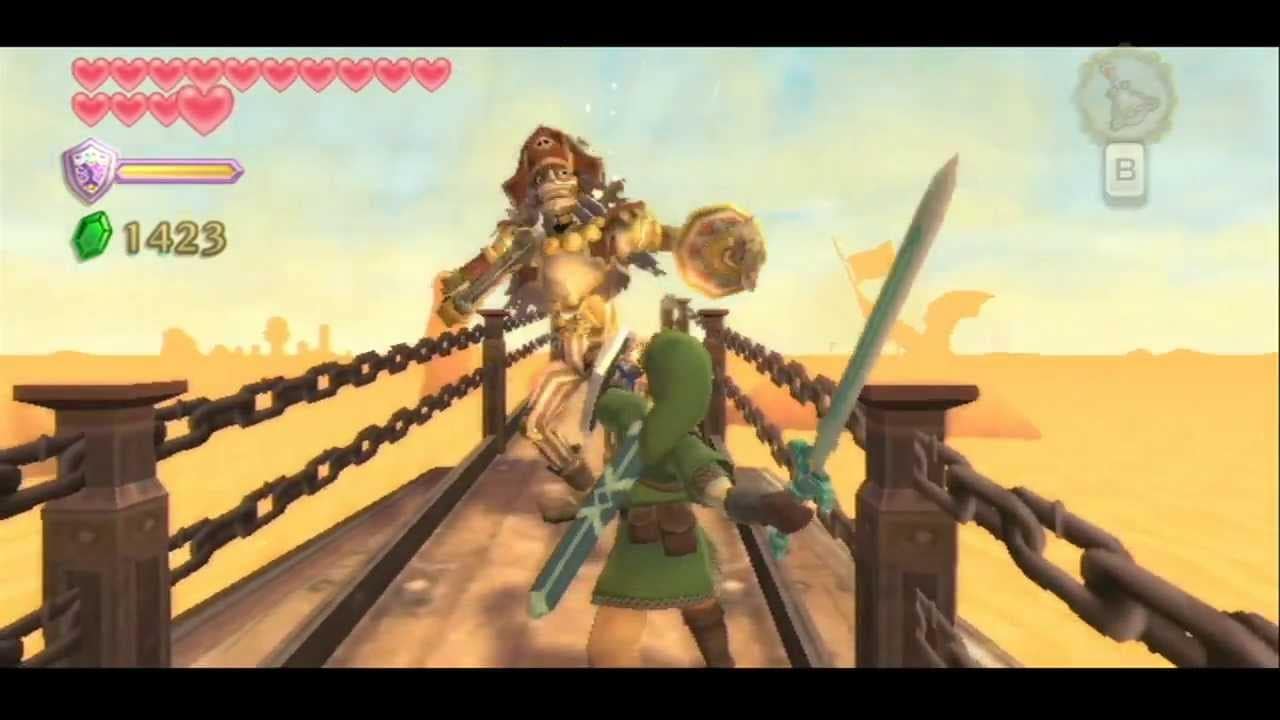
6) LD-002G Screvo
From skeletal mini-boss to skeletal mini-boss, LD-002G Scervo (or Scervo for the rest of this entry) is the captain of the Sandship in Skyward Sword. Wielding a hook in one…with a hook as a hand and a sword in another, you battle Scervo in the most swashbucklin’ fashion possible – on a plank at the front of the ship, hovering over the sandy depths below. Link has to catch Scervo off guard to make him lose balance, allowing Link to slash at him back towards the edge of the plank. On Link’s side of the plank is a spiked gate that moves closer to Link, reducing the battle plank every time Link gets Scervo near the edge. Eventually, Link destroys Scervo’s sword-bearing arm, so he’ll start swinging his electrified hook at you. But with a single-arm against Link’s might, Scervo soon plunges off the plank into the harrowing sandy ocean – leaving Link to casually collect the Bow and continue through the dungeon, unphased.
5) Dark Link
Arguably the most iconic mini-boss battle in the Legend of Zelda series is Link’s bout against Dark Link. Dark Link has a cult following and fan appreciation that’s hard to ignore – and it’s for good reason given how great this fight is. Taking place in the Water Temple, it’s one of those mini-boss fights that sticks out far more than the final boss of the dungeon. For all the hate the Water Temple gets, this battle is arguably its most redeeming quality (for those peeved by the Water Temple – which isn’t me). Link enters a room that’s starkly different to any other room in the Water Temple – what seems to be an endless shallow pond stretching into eternity, with two gates at either end and a small island housing a single tree in the centre. Link passes the tree, but his shadow doesn’t come with him – so as most people would do – turns to see where the blighter has gone. There, under the tree, is Dark Link, who, when approached or attacked, becomes hostile. This leads into a lengthy sword battle, where Dark Link is matched perfectly against Link’s might and ability. Once bested, he returns as Link’s shadow. Some classic Nintendo attention to detail is that the number of hits needed to beat Dark Link will be determined by the number of hearts Link has when you get to that battle – he’s a true clone of Link in every sense, and I love it!
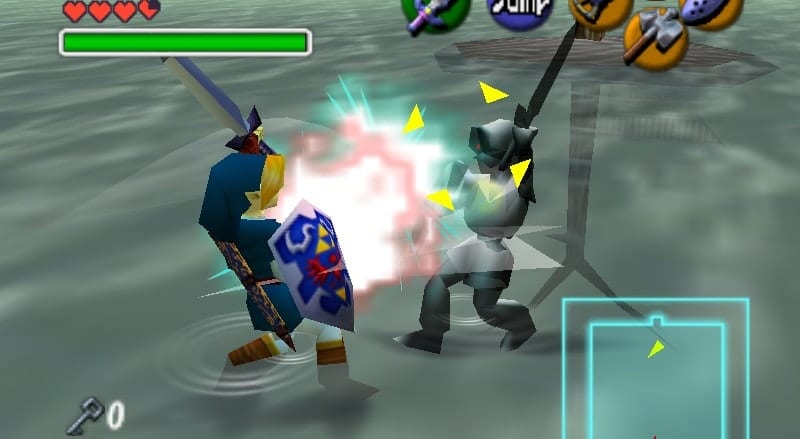
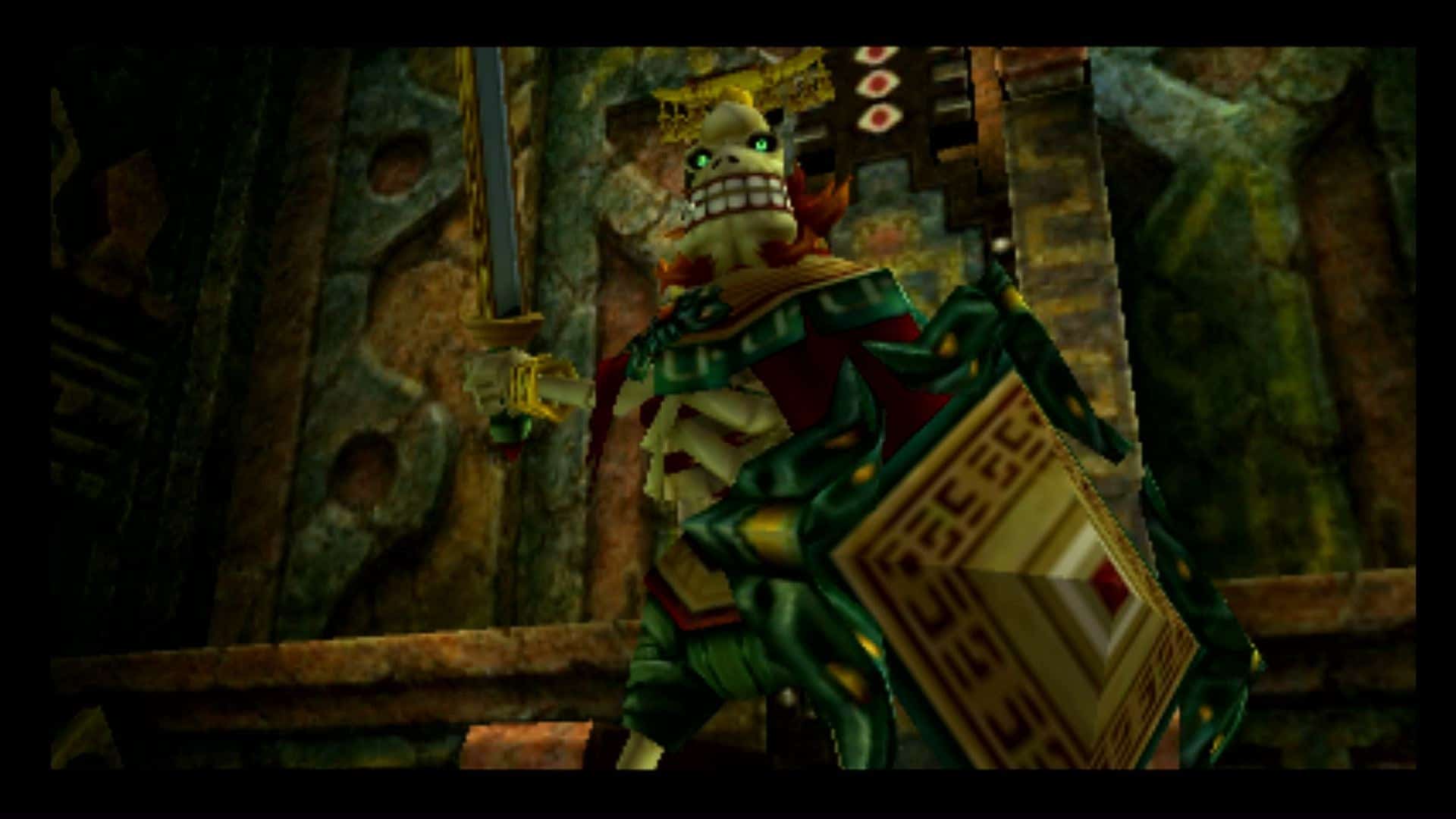
4) Igos du Ikana
With only 4 dungeons in Majora’s Mask, there’s a distinct lack of mini-bosses. However, the final boss of a mini-dungeon, and therefore a mini-boss by default (are you still with me?) is Igos du Ikana. Igos is the king of the proud Ikana tribe, who he leads in the Great War of Ikana – a fierce and unforgiving feud against the Garo which occurs long before the events of Majora’s Mask. Igos awaits Link in the throne room of the Ancient Castle of Ikana and, after making his way through the mini-dungeon, finds Igos perched on the throne – his skeletal body a reminder of his rule that’s so beholden to him that not even death can interfere. Igos first sends his two henchmen after Link – one, the greatest Swordsman in all of Ikana – but Link soon brushes them aside with the help of some intruding sunlight and the Mirror Shield. Igos then gets involved himself and, unlike his henchmen, has the ability to breathe ice, or even send his skeletal head towards Link to latch onto him. He’s defeated in the same way, but soon emerges as a spirit, and thanks Link for lifting the curse on him. It’s a fantastic battle within Majora’s Mask that results in Igos recognising Link’s ability to release the curse on Ikana, so teaches him the Elegy of Emptiness. You can read more on that song in my Top 10 Majora’s Mask Ocarina Songs blog.
3) Iron Knuckle
The strongest enemy in Ocarina of Time, and the mini-boss for the Spirit Temple is the Iron Knuckle. With more protection than a military tank, this behemoth is clad in armour whilst also brandishing a huge double-edged axe, capable of slicing through Link like a hot knife through butter. Iron Knuckles are restricted in their movement, slowly approaching Link due to the heavy armour. However, their swings are perilous, and they easily brush down huge stone columns in their pursuit. Link can’t shield their attacks, so must dodge, find openings, and strike. During an Iron Knuckle fight, eventually, they’ll shed some of their armour, making them lighter and quicker. Their improved dexterity means Link needs to be more careful – but doing so will leave him victorious. The Spirit Temple has two of these fights, one for both Child and Adult Link – the Adult Link fight reveals the Iron Knuckle to, in fact, be a possessed Nabooru, brainwashed by the witches Kotake and Koume and forced to do Ganondorf’s bidding. There’s one more Iron Knuckle in Ganondorf’s Castle, but each bout against these powerful warriors is a dangerous and thrilling affair that I always look forward to revisiting.

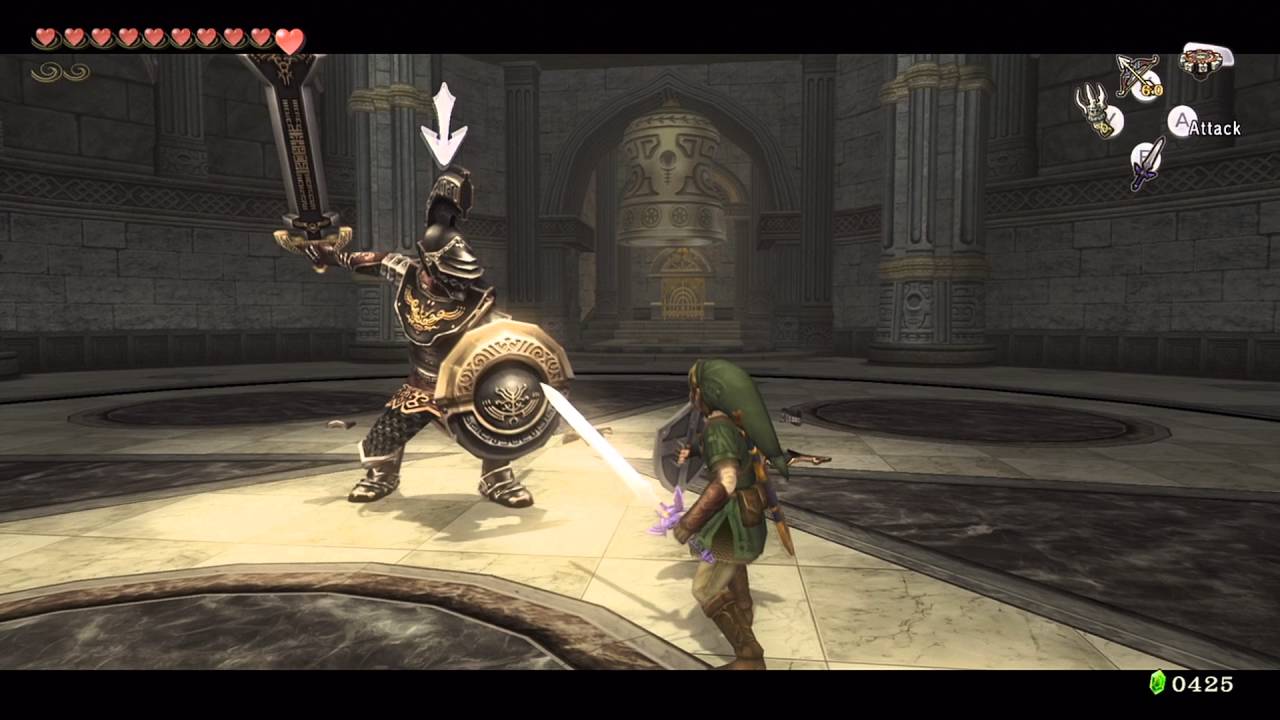
2) Darknut
Another armour-clad mini-boss, but one that’s been used more frequently across the series, is the Darknut. The Darknut has been used in seven different Zelda titles, including Link’s Awakening, Minish Cap and Wind Waker. Although they haven’t always been mini-bosses, they have always been a challenge. My favourite iteration of the Darknut is in Twilight Princess – appearing as the mini-boss in the Temple of Time, the Darknut wields a huge sword and shield and is clearly adept and trained for battle. Attacking a Darknut head-on won’t get Link anywhere; you’ll have to use a plethora of the Hidden Skills taught to you by the Hero’s Shade to take them down. Much like the Iron Knuckles, after doing some damage, they’ll remove their armour. Whilst this speeds up the Darknuts in several games, like Wind Waker, in Twilight Princess, the Darknut will toss their sword at Link and draw a short, rapier style sword for this new form. As well as being more nimble, the Twilight Princess iteration will also change their battle style completely. This makes the fight more dynamic, progressive, and interesting – it’s even more difficult when there’s three of them in the Cave of Ordeals! The Twilight Princess version will always be my favourite Darknut fight, whilst the mini-boss overall falls short of the number one spot.
1) King Bulblin
King of the Bulblins, King Bulblin serves as a recurring mini-boss and antagonist in Twilight Princess. First encountered within Ordon, King Bulblin smacks Link over the back of the head, knocking him out. He seizes this opportunity to then hijack Ilia and Colin, and thus begins the game-long feud between him, and Link. Link eventually tracks down King Bulblin and his cronies to Kakariko village – Colin had managed to break free but is then kidnapped again. Link pursues King Bulblin and is soon in a standoff on the narrow Eldin Bridge. The pair joust, but Link is victorious – knocking the King to the shallow depths below whilst Epona stands on her hind legs, Link raising his sword in triumph. King Bulblin returns however – surviving the fall – and attacks an escort with Link, Telma and the Zora Prince. It ends with another joust, another Link victory, and some hard-hitting Deja vu. But King Bulblin still isn’t done and blindsides Link just outside the Arbiter’s Grounds later on. This time the battle is off horseback, in a small stable, King Bulblin armed with a gigantic axe. After losing, King Bulblin limps off but sets fire to the barn, forcing Link to make a quick exit. He appears once more in Hyrule Castle, and this time it’s the final battle. After Link wins, King Bulblin declares that he only knows how to follow strength, recognising Link to be more powerful than Ganondorf, thus ending their feud with respect. It’s unique for a mini-boss to have this much traction in the game and to have such a relationship with Link. It’s something I loved about Twilight Princess and about King Bulblin, landing him in the number one spot for my favourite Zelda mini-bosses.
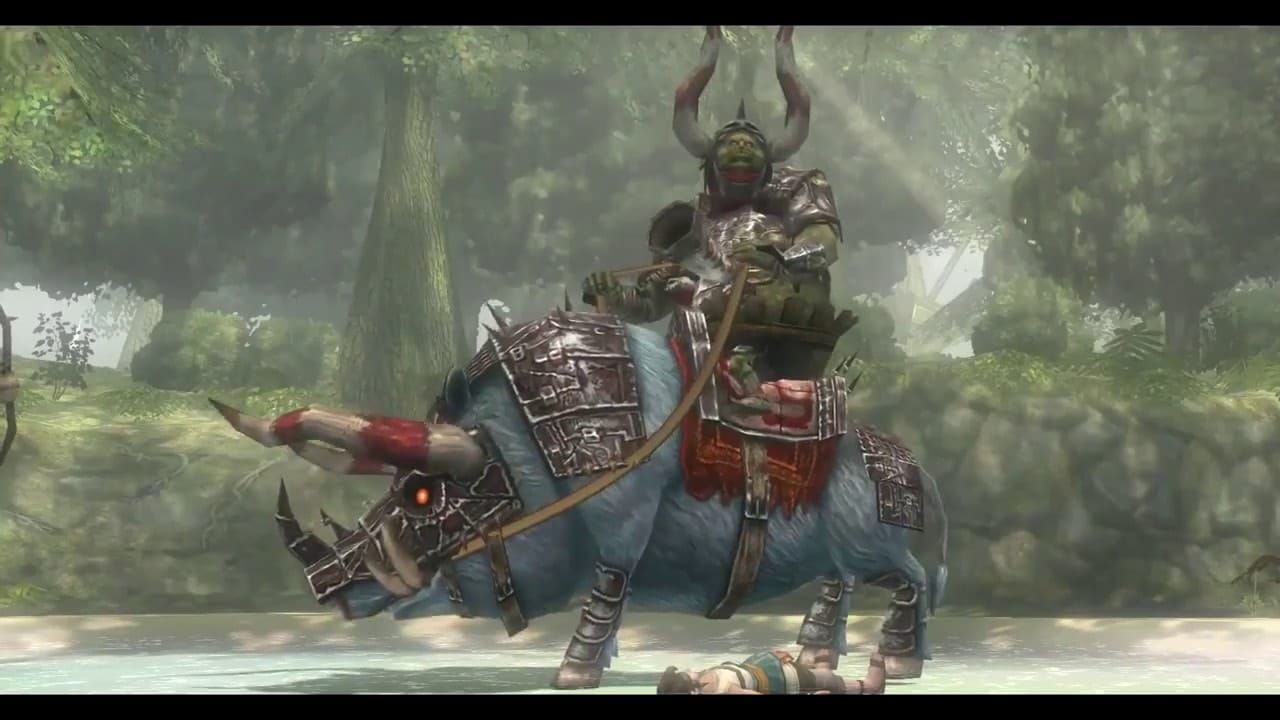

From a friendly Goron to a hog riding King, the mini-bosses of Zelda have always been a great test of skill and strength before that final dungeon boss. Sorely missed in Breath of the Wild, it’s always been an opportunity to add more character and depth to the game – instances like King Bulblin being the epitome of developing the in-game world. Hopefully, it’s something they bring back for BotW 2, as I’m hoping we’ll get more great mini-boss Zelda moments in the future.

